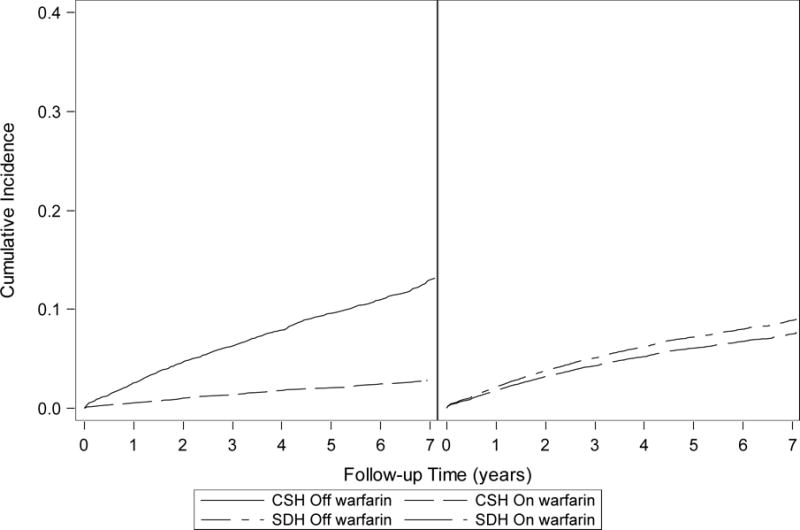Figure 1.

Unadjusted cumulative incidence curves estimated using the Simon and Makuch approach (cause-specific model)22 (Figure 1a) and the subdistribution hazards modeling approach (Figure 1b) for patients on and off warfarin: The unadjusted cumulative incidence at the end of follow-up is higher for patients off warfarin in the cause-specific model than in the subdistribution hazards model (cumulative incidence < 0.1 on and off warfarin), and the cumulative incidence curves for patients on and off warfarin are closer together in the subdistribution hazards model. In the cause-specific model, individuals who have a competing death event are censored and assumed to be at risk for the outcome, despite the outcome no longer being possible. In the subdistribution hazards model, patients with a competing death event remain in the risk set but can never experience the event of interest. The unadjusted curves for the subdistribution modeling approach were generated with the assumption of proportional hazards.
